In order to honor their memory, we are looking for information, testimonials, documents, photos, on all the crews, soldiers and officers and nurses who flew aboard FZ668 during the Second World War.
A plaque with their names will be affixed to the aircraft upon completion of its restoration and all information collected will be included in one forthcoming book dedicated to our aircraft.
Feel free to contact us if you think you can help us in this endeavor
We were able to identify the following people:
Squadron 271:
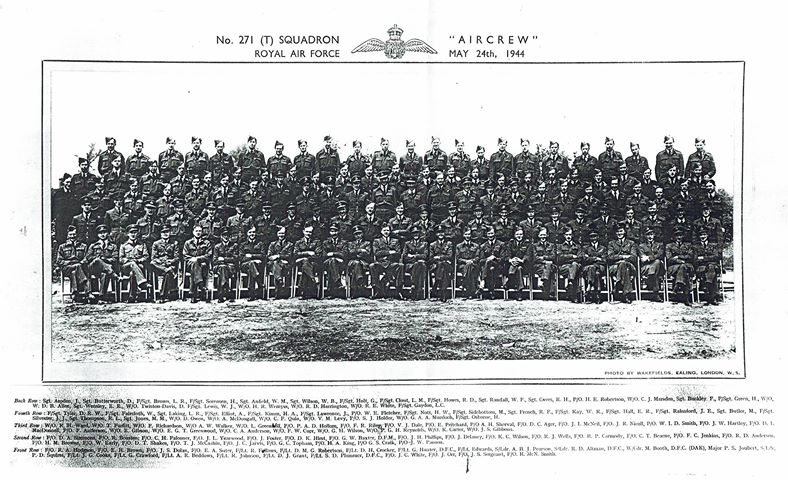
These members of 271 Squadron flew on FZ668:
RCAF:
F/O McNeil J.I. (RCAF 21876)
F/Sgt Pope V.W (RCAF R.200855)
P/O Watters G.J (RCAF R50661)
W/O Johnstone G.B. (RCAF 103656)
F/O Thompson L.M. (RCAF J39616)
F/O H.Z. Rogers (RCAF J 42151)
RNZAF:
F/Sgt Allen P.G. (NZ 428063)
F/Sgt Brightling J.P (N.Z. 428776)
F.Sgt Bishop M.R. (NZ 428073)
F.Sgt Fenton A.F. (NZ 426110)
F/Sgt Holmes N.K. (NZ 427458)
F/Sgt Buchanan M.D. (NZ 421615)
RAAF:
F/O K.P. O'Donell (A. 411810)
F/O T.R. Holdsworth (A. 410983)
F/Sgt Talbot H.O.W. (A 422752)
F/Sgt Bayley J.H (A 436310)
F/Sgt Hamilton H.M. (A 433101)
F/Sgt Pearce R.H. (A 436662)
RAF:
F/O Nicoll J.R,
F/S Dale W/O Marsden C.J.
Sgt Caves R.H.
F/L Riley F.R.
W/O Connolly T.W.
F/O White J.C.
F/O McDonell D.I.
S/L Pearson A.B.
P/O Harrington R.D.
W/O Wemyss H.R.
W/O Gibbons J.S.
W/O Elliot A.
W/O Twiston-Davies
F/Sgt Kimm H.A
Sgt Manson W.J.
W/G Brewer P.
W/O Greenwell L
Sgt Hodson H.
F/Sgt Brown L.R.
F/Sgt Aspden J
F/O J.I MacNeil (J. 21876)
F/Sgt Green H
F/O A Whitaker
F/Sgt Randall W.F.
F/Lt G.J Bailey
Sgt Murray L.A.
W/O Drabble T.J.
F/Sgt Watters G.J. (R. 136778)
F/Lt P.A.D. Hollom
Sgt Brisk S
W/O Elliot A.
F/O G.R. Harvey
Sgt Davis J.L.
Sgt King E.
F/O E.Pritchard
F/Lt F.R. Riley
F/O A.H Sherval
F/Sgt Wilson W.B.
F/Sgt Maunder J.K.
F/Sgt Green H
F/O Thompson L.M
Sgt Flood K.W.
Sgt Winckworth R.A.
F/O Norris S.E.
F/Sgt Foster G.
F/O Peirce D.R.
F/Sgt Laking L.R.
W/O Hall E.R.
P/O Hodgson F.
W/O Hold G.
F/Sgt Goodwin N.J.
W/O Craw N.R.
F/Sgt Flood K,W,
F/O P.A. Lewis
F/O C.H Deakin
F/O W.G. Woods
F/L T.J. Powell
F/L D.K. Hirst
F/O C.T. Bearne
F/Sgt Thompson R.L.
F/L J.Delaney
F/L R.Fellows
F/O H.T Mundy
F/O R.Williams
F/Lt R.N. Smith
F/O J. Rainsford
F/Sgt Wensley E.E.
W/O Quin C.F.
W/O Sidebottom M.
F/Sgt Tipping P.
F/O K.C. Wilson
F/Lt W.A.B. Carter
F/O J. Foster
F/O E. Anderson
F/Lt W.A. Pearce
F/O A.C. Doyle
F/O F.C. Edmonds DFC
W/O Rowbottom C
F/O H.G Merson
F/Sgt Bird K.J.
F/O A.E. Harvey
F/Sgt Van Natter K,R, (R. 198772)
P/O P.D. Crowden-Longstreath
P/O J.N Highan
W/O Wallace D.
D-DAY:
Lt England J.K. (captured around 7AM on June 6th)
Private T. Billington (Murdered by german on June 6th)
Private A. Bunning (captured)
Private R. Johnson
Private R.H. O’Hara
Private F.J. Haselden (Captured on June 6th)
Private A.H. Warner (KIA on June 6th)
Private A. Partridge
Private S. Davies
Private S. Hamilton
Craftman T.A. Thoumine, Died on June 10th from wounds sustained on June 6th
Captain C.E. Greenwood (KIA on June 7th)
Chaplain G.A. Kay (KIA on june 7th)
Sgt W. Davis
Sgt C.J. Popham
S/L Groom
Market-Garden:
Corporal Horsbursch
Corporal Kerridge
Private Hainey
Staff-Sergeant Alexander McMillan (6296502)
During this period, FZ668 carried out resupply missions, mainly to bases B.56 (Brussels Evere) and B.58 (Brusells Melsbroek). These flights departed from Northolt.
On January 1st, 1945, The Luftwaffe launched a last gasp operation, a massive attack on allied airfields to regain air superiority. While the operation was a tactical success, it was ultimately a failure, with heavy German casualty rates and rapid replacement of the Allied aircraft destroyed. Between 30 and 40 Me 109s and Fw 190s attacked B.56 Brussels and destroyed seven Dakotas, K6973, K6943, K6686, K6994, K6998 and K6024, which were the only air ambulances on the continent. They also killed Leading aircraftman J. Hyams (1698152).
FZ668, along with other Dakotas of 271 Squadron, was given the task of conducting regular medical evacuation flights and the repatriation of prisoners of war.
From April onward the acceleration of allied troop progress in Germany led to an increase in operational flights for FZ668, mainly to transport cargo and fuel for bases in the Netherlands and Germany, with return flights dedicated to the evacuation of wounded.
September 6th 1944
A first information on a possible operation named Comet is received.
September 7th 1944
More information was provided to the Squadron; a potential operation named Comet was to be an airborne assault using gliders in the vicinity of Arnhem, the objective being to capture the bridges crossing the Rhine.
Two waves were planned, the first to take off at 3:55 on September 8th, the second at 14:46.
Late at night, information was received that the operation would be delayed for 24 hours.
September 8th, 1944
A further briefing on Operation Comet was received at 14:00. All aeroplanes and gliders had to be moved due to an active runway change. Later in the day the operation was again adjourned for 24 hours
September 9th, 1944
No activity, crews and troops are informed in the evening that operation Comet is postponed again, this time by 48 hours.
September 10th, 1944
Following a breach in the PLUTO pipeline linking England to France, 32 crews transport fuel to Brussels Melsbroeke (B58). The return flights bring wounded back to England.
September 11th, 1944
A repeat flight to B58, this time carrying ammunition.
September 12th, 1944
A similar operation to the previous two days is conducted to B.56 (Evere) and B.60 (Grimbergen). Operation Comet is finally cancelled.
September 13th, 1944
Supply flights to the front line continues.
September 16th, 1944
All the gliders and aircraft to be used in Operation Comet are prepared for the upcoming Operation Market Garden. The briefing is held in Hangar 1 at Down Ampney because the usual room is not large enough to hold the 49 crews.
The objectives of Operation Market Garden are to position elements of the first Airborne Division and so establish bridgeheads on the Rhine at Arnhem and keep the bridge intact until the 30th Corps arrives.
.
September 17th, 1944
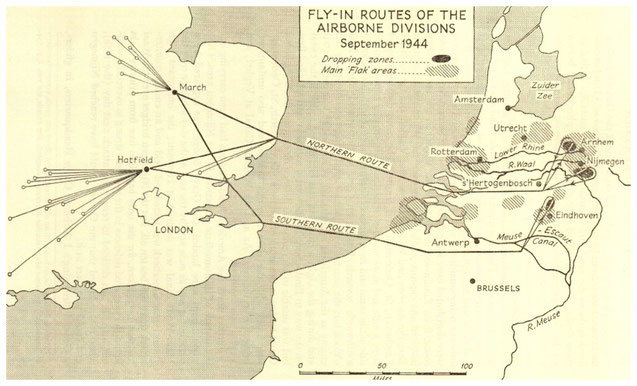
Airborne troops arrive 25 minutes before takeoff. Phrases written on gliders like "it's not cancelled this time", "Here we go, we hope" reflect the state of mind after multiple postponements.
FZ668 does not take part in the first wave.
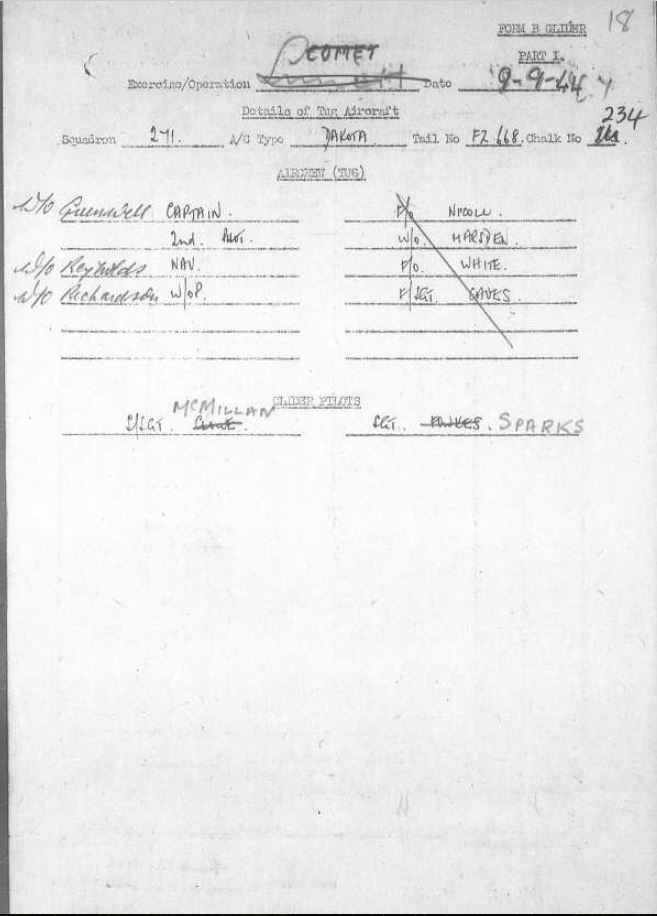

September 18th, 1944
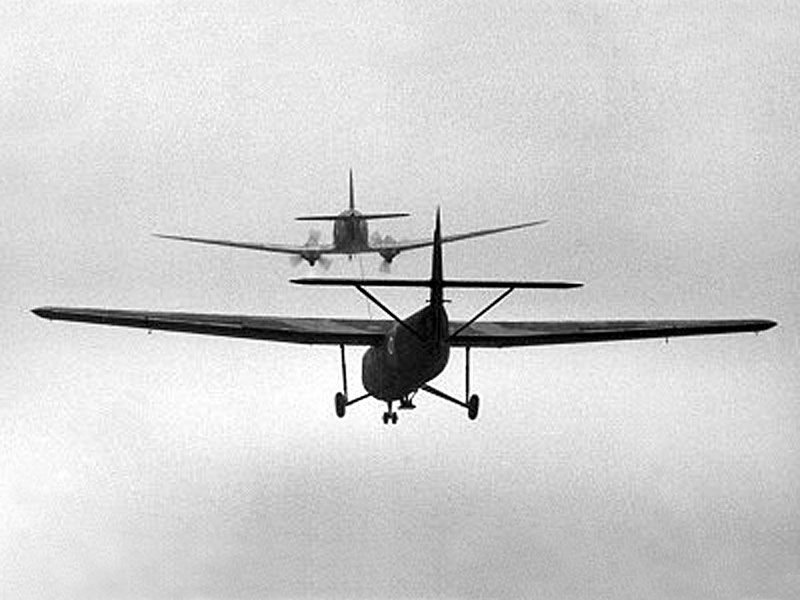 Dakota towing a Horsa glider
Dakota towing a Horsa glider
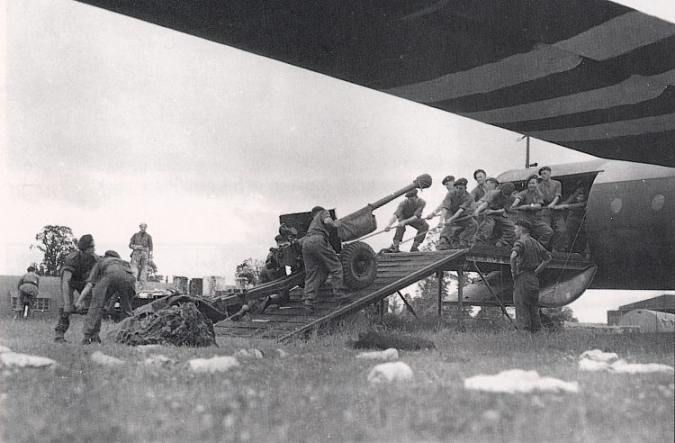 6Pnd Gun loaded into a Horsa
6Pnd Gun loaded into a Horsa
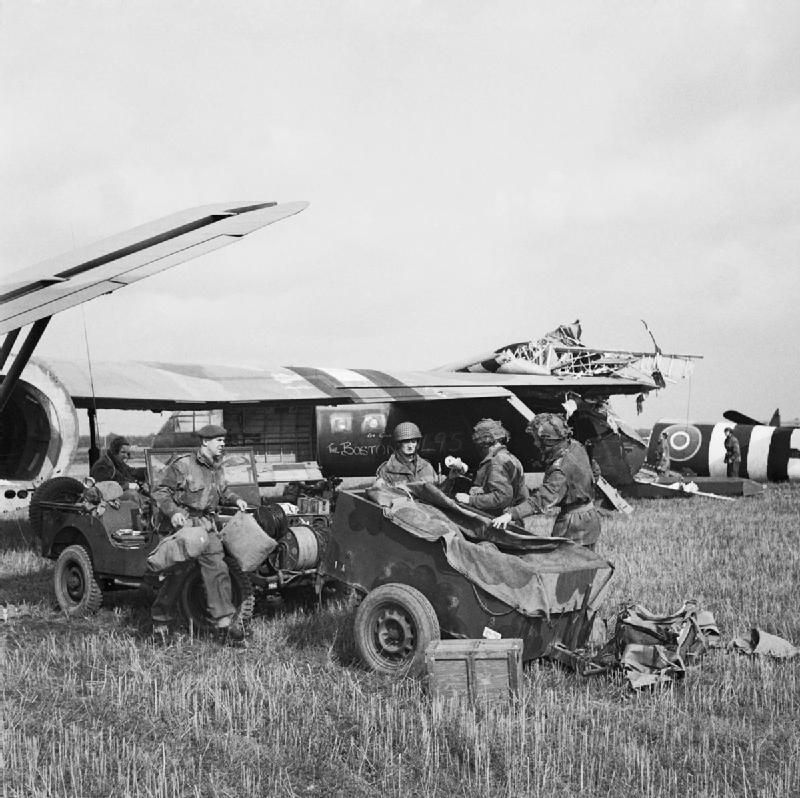
Horsa glider at Arnhem
24 Dakotas, including FZ668 piloted by F/O Nicoll, KG374 piloted by F/L Lord and KG444 piloted by F/L Edwards tow 24 Horsas to landing zone ‘S’ (LZ S). FZ668 is numbered 234. The Horsa towed by FZ668 carries Corporals Horsbursch & Kerridge and Private Hainey, as well as a jeep named Willy and a 6-inch cannon. The Horsa was piloted by 22 year-old A. Alexander McMillan, 6296502, 11 Flight, A Squadron who was killed during the subsequent troop withdrawal and his body was never found.
All went well and despite a German Flak very present, the aircraft returned to England without damage
September 19th, 1944
On the ground, the British forces were taken by surprise by the presence of the 9th and 10th SS Panzer Divisions and heavy fighting raged. The first British Airborne division was in dire need of supplies. 17 aircraft of 271 Squadron participated in the re-supply operation including FZ668. 271 Squadron’s drop zone was DZ "V". The Germans were informed of the position of the drop zone and set up a trap consisting of 4 x 20mm guns and at least one 88mm battery. In the afternoon, several Short Stirling aircraft were shot down and despite an attempt to communicate information about the presence of the German forces, it did not arrive in time.
Seventeen Dakotas, the last aircraft to arrive at the drop zone, were welcomed by a powerful anti-aircraft defences. Allied troops were in direct contact with the enemy. KG374, the C-47 piloted by David Lord, was hit twice while conducting a first drop at 1500 ft and its right wing was close to structural failure . Two containers remained on board, and despite the certainty that his aircraft would crash, Lord and his crew made another pass over the troops while under enemy fire to drop the last two supply containers. F/O David Lord ordered his crew to jump, but the wing failed before they had time.
KG374 crashed, killing all but one of her crew. David Lord was posthumously awarded the Victoria Cross, Britain's highest military honour, the only one awarded to a member of the Air Transport Command during WWII.
.
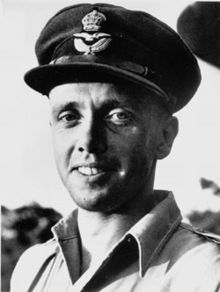
F/L David Lord, VC
FZ626, piloted by P / O Wilson, arrived over the drop zone at 16:30 local time. He descended to 500ft at about 100 kt. His aircraft was immediately hit by the Flak and with minimal control of the aircraft. Len Wilson decided to crash his aircraft into the 20mm guns. Two of the crew members succeeded in bailing out of the aircraft before it crashed. However, the other five, Len Wilson, Herbert Osborne, Reginald French, James Grace and Richard Newth, were killed in the crash. On the ground, the crash caused panic. A cannon was hit and the German troops left their position.
The Sacrifice made by FZ626 probably saved a large number of lives and allied aircraft on that day.
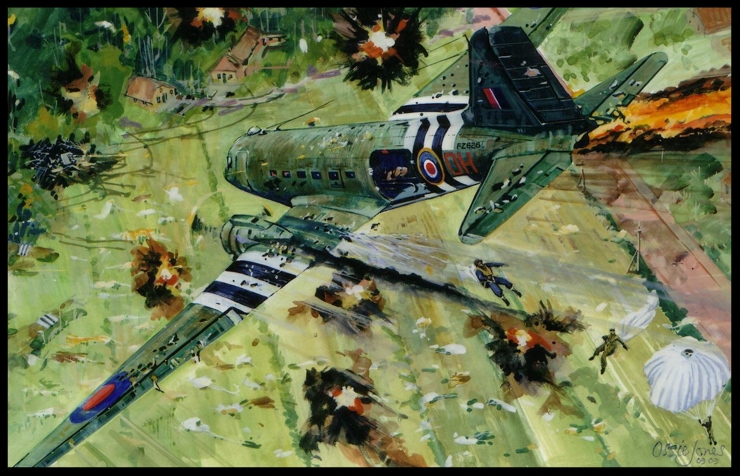
FZ626's sacrifice
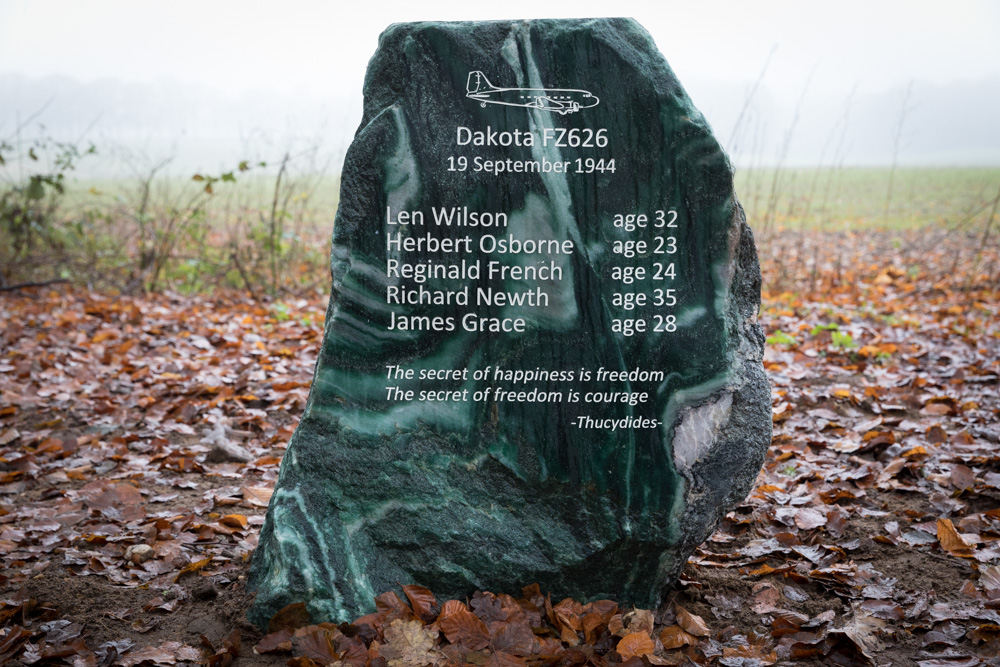
Memorial to crew of FZ626
September 20th, 1944
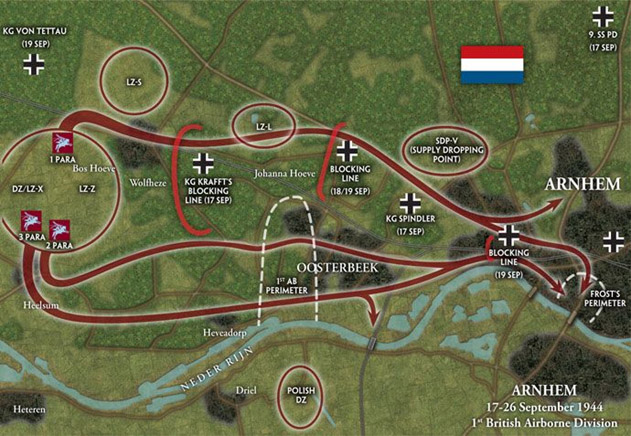
Location of DZ “V” and troop positions.
Sixteen Dakotas including FZ668 were tasked to refuel DZ "V" where fighting was still raging.
The Dakotas dropped a total of 256 baskets weighting 90,720 lbs. The wing of KG365, piloted by W / O King, was hit by two shells, but he was able to return to base. Several aircraft were damaged by the flak but no losses were incurred.
September 21th, 1944
12 aircraft, including FZ668, conduct another resupply mission to DZ "V”.
Strong anti-aircraft defences were encountered to the North-East of the DZ. After the drop, several German fighters attacked the Dakotas. There was no Allied escort present and the slow transport aircraft were an easy target for the Fw 190 and Me 109 fighters.
KG340 piloted by P / O Cuer was shot down, and five of the eight crew members managed to bail out of the aircraft before it crashed.
KG516 was also a victim of enemy fighters, but all its crew bailed out in time.
FZ615 was hit but managed to land in Brussels.
KG444 was also targeted and shot down by a Fw190. You can read F / L Edwards complete report here.
FZ668 returned safely to England.
September 22th, 1944
271 Squadron made one flight to B56, returning the crew of FZ615.
September 23th, 1944
Only five aircraft from 271 Squadron took part in the fourth resupply flight to DZ “V” because of damage and losses in the preceding days including to FZ668. This time, allied fighters accompanied the Dakotas, but no air resistance was encountered.
North of the DZ, strong anti-aircraft defences were encountered and FZ668 was damaged by German guns. One of the dispatchers was hit in the leg by shrapnel.
61 baskets and 17 medical kits were successfully dropped. This was to be the last mission of FZ668 during Operation Market Garden. On September 24th, the last intended supply mission was cancelled. On the ground, the Commanders decided to abandon the crossing of the Rhine and adopted a defensive position; on the 25th the withdrawal of troops was begun. Operation Market Garden was a failure.


